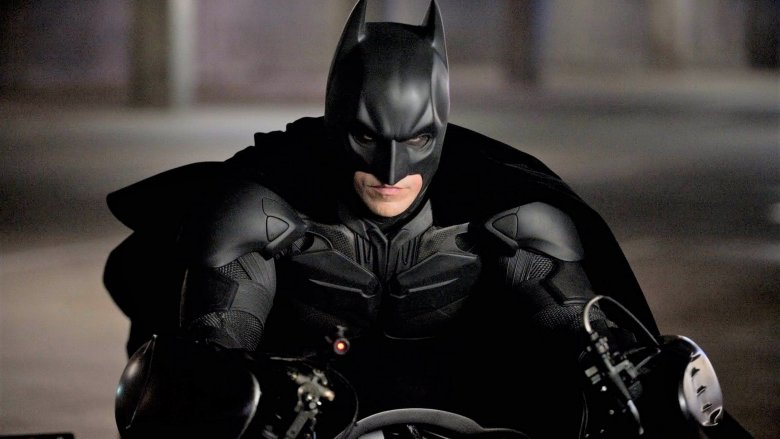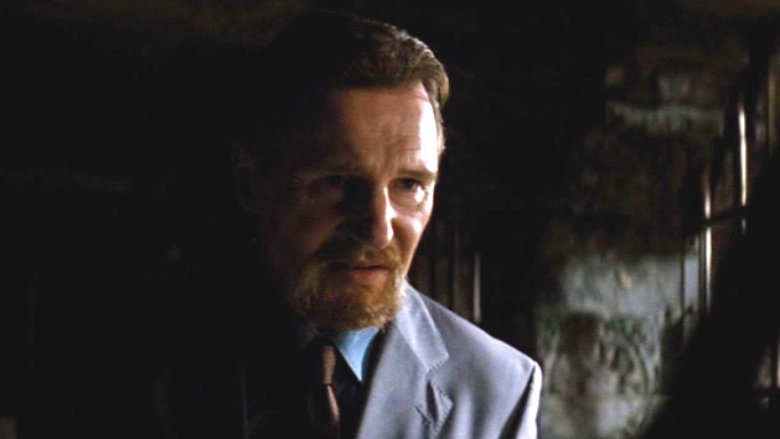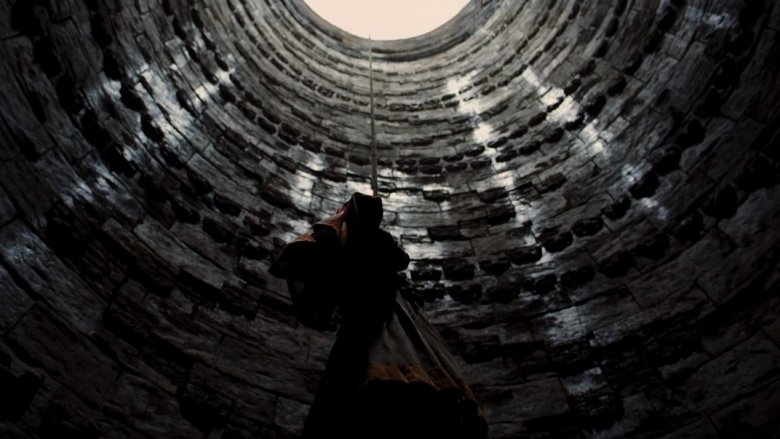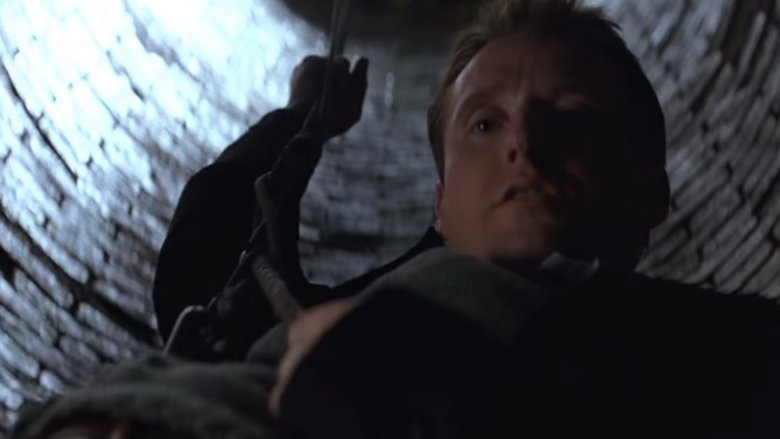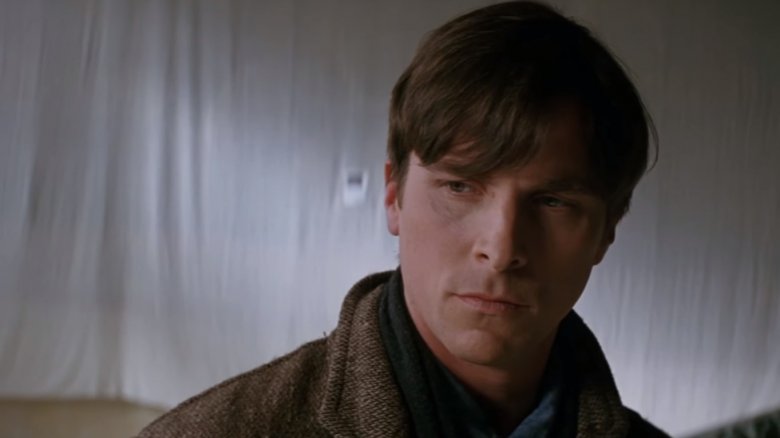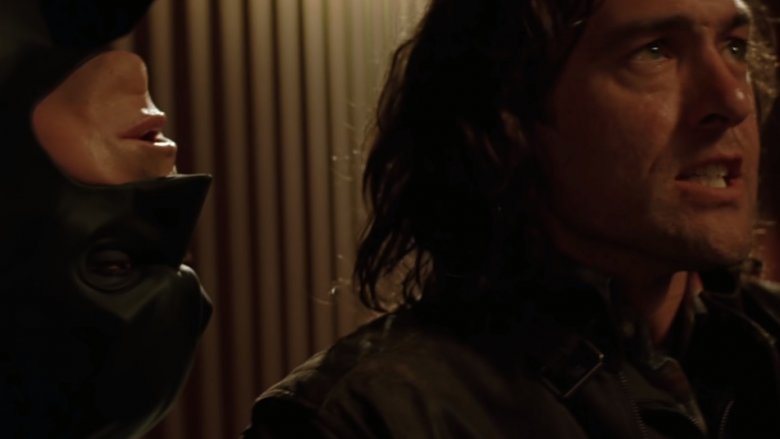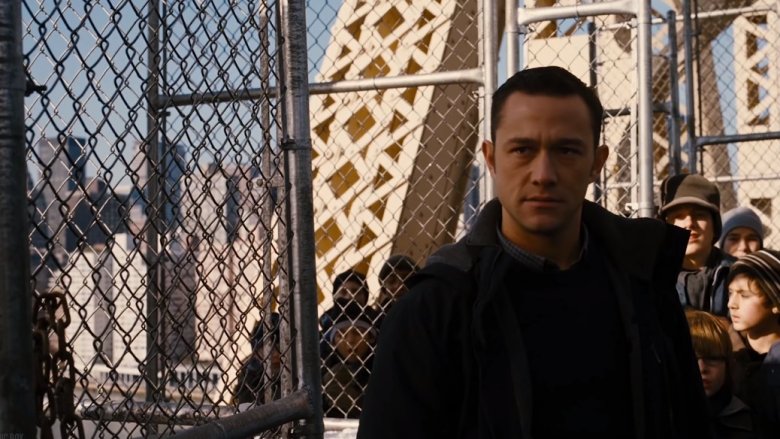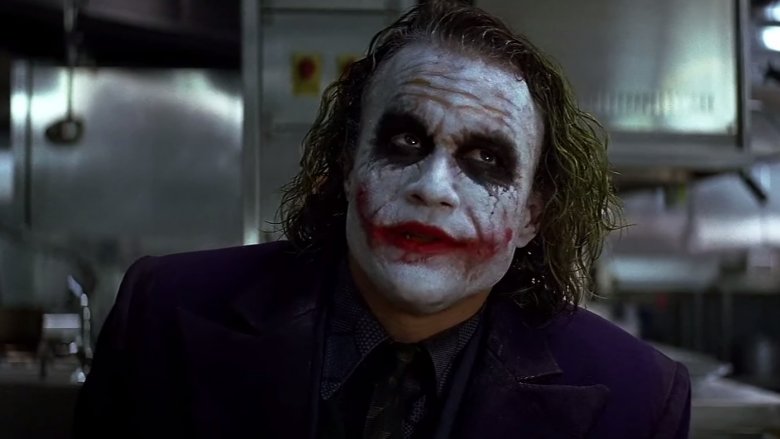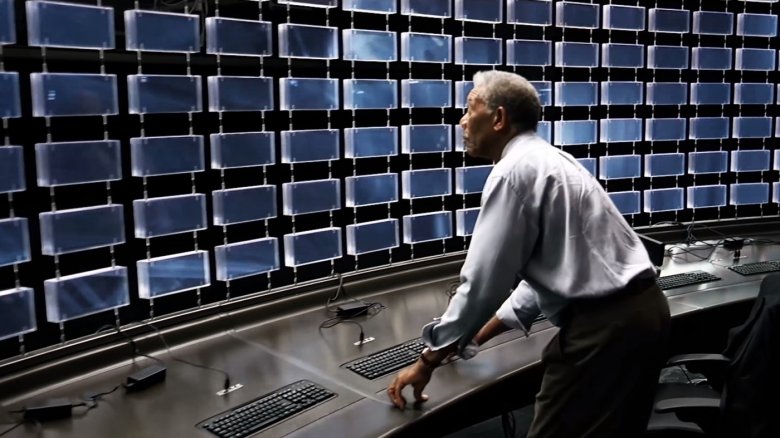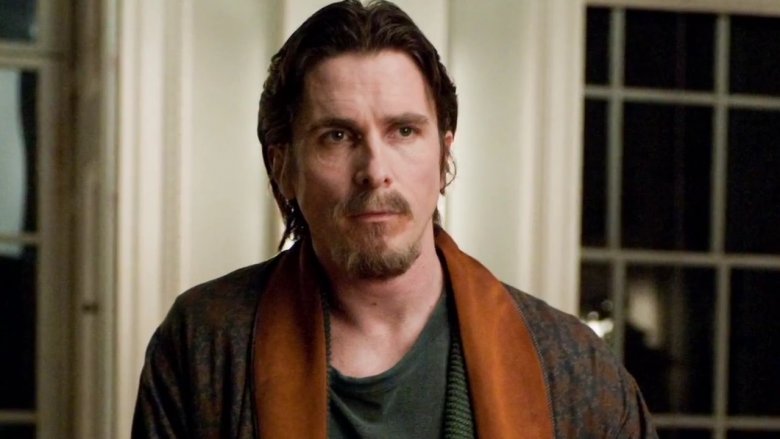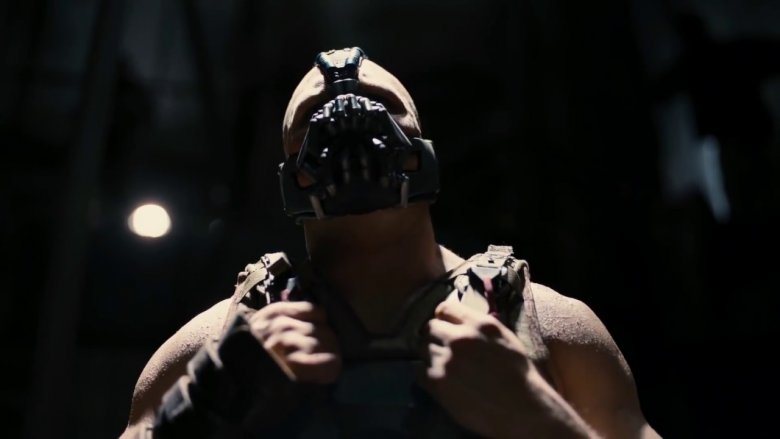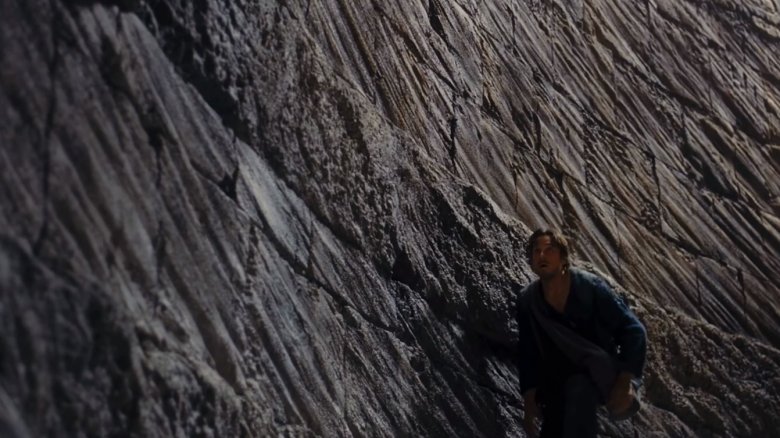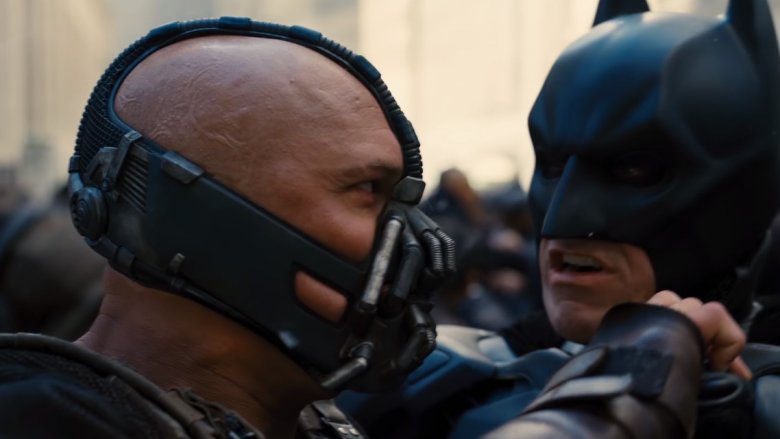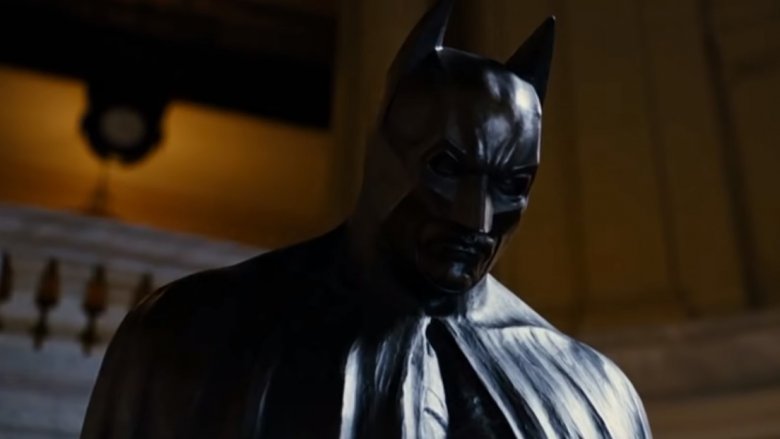The Entire Dark Knight Trilogy Story Finally Explained
It's been nearly a decade since Christopher Nolan's Dark Knight trilogy came to a close with 2012's The Dark Knight Rises. Seven years, three movies, and over $2 billion at the box office totally changed audiences' expectations of what a superhero movie could be. Colorful costumes and aw-shucks optimism were replaced with a grim world populated by maniacs whose acts of terror seemed all too grounded in real-world fears. Batman himself became a quip-free force for violent vigilantism, orders of magnitude removed from any interpretation of the character that had made it to the screen up to that point. He was angry, driven, and roughly as fleshed out as a fictional hero dressed as an animal can reasonably be expected to be.
From the hero's origins to the centuries of injustice explored in the films, the Dark Knight trilogy possesses a gritty yet fascinating world. Here, we'll explore the history of Bruce Wayne and his more realistic rogues' gallery, and how three films made us believe a man could, you know, not fly, but do wingsuit stuff. Intimidating wingsuit stuff.
The story begins in the shadows
In a chaotic world, it can be comforting to imagine that there's a singular force behind history's most horrifying events. That's part of what draws people to conspiracy theories about groups like the Illuminati or the Knights Templar — organizations so powerful and secretive that they can hide in plain sight while pulling the metaphorical strings of a society.
In the Dark Knight trilogy, those theories would be entirely well-founded, since an enigmatic group known as the League of Shadows has been molding civilization for more than a thousand years. Their theory is that when a great nation becomes too large and decadent, it needs to be purged like an overgrown forest.
Secrecy is their calling card, but we're given a few glimpses of the League's actions over the centuries. Their leader, Ra's al Ghul, claims that they "sacked Rome," most likely referring to the attack on the former Roman capital in 410 AD by the Visigoths, an event that led in part to the fall of the Roman Empire. Ra's al Ghul also says they "loaded trade ships with plague rats" and "burned London to the ground," implying that they retained power in the 14th and 17th centuries.
Ra's al Ghul and the pit
Based on Talia al Ghul's age in The Dark Knight Rises (which takes place eight years after the 2008 election in The Dark Knight) we can infer that the following parts of the story take place around the early-to-mid-'80s. A young Ra's al Ghul, then a mercenary for hire, falls in love with the daughter of a powerful warlord. The warlord orders that Ra's is to be thrown into an infamous prison known only as "the Pit," a deep hole in an unnamed but ancient country. The warlord's daughter arranges to take the place of Ra's in exchange for his freedom, never letting Ra's or her father know. A few months later, also without Ra's' knowledge, she gives birth to his child, a girl named Talia. The girl's mother is attacked and killed by fellow inmates a short time later, and Talia falls under the protection of Bane, a man who's spent his entire life in the Pit.
As a young girl, Talia attains a legendary status among the Pit's prisoners when she becomes the first inmate to successfully escape. While she climbs to freedom, Bane holds back the other enraged prisoners and is gruesomely disfigured in the process. Talia tracks down her father, now a high-level figure in the League of Shadows, and he goes to the Pit, executing the people responsible for his lover's death and extracting Bane, recruiting him for the League and treating his injuries with the use of a mask that continually doses him with pain suppressants.
Meet the Waynes
Far away from the Pit, on the other side of the world, the League of Shadows is plotting a new form of attack. They want to cause an economic collapse in the overcrowded and increasingly desperate city of Gotham, thinking that once people become hopeless enough, they'll turn on themselves and do the difficult work of destroying the metropolis.
However, the League's plans are thrown off by an unforeseen factor: the rise of philanthropist power couple Thomas and Martha Wayne. Thomas, a celebrated surgeon, is also the chairman of Wayne Enterprises, a technology and real estate development company, as well as the head of the charitable Wayne Foundation. Thomas and Martha invest heavily in improving Gotham, funding the construction of an elevated train system suspiciously similar to Chicago's "L." They also have a son, Bruce, whose childhood winds up punctuated by a series of traumas, including falling down a well while playing with his friend Rachel and being swarmed by bats. That part's important, by the way. It comes up later.
Ironically, Thomas and Martha succeed in pulling Gotham out of its depression, but only in their deaths. The two are shot and killed in a mugging by a low-level criminal, Joe Chill. Bruce witnesses his parents' deaths, and the city's elite are inspired into action, helping to clean up Gotham and create a better, if imperfect, place to live, little knowing that this will inspire further, more insidious actions by the League.
The assassination of Joe Chill
Joe Chill is hastily arrested for the murders of Thomas and Martha Wayne, and he spends roughly a decade behind bars. While there, he shares a cell with mob boss Carmine Falcone and manages to glean information on his criminal activities. And that's when Chill decides to become a stool pigeon, exchanging testimony about the gangster for parole.
Bruce Wayne attends Chill's hearing with a small revolver in his pocket, intending to kill the man who murdered his family. Unbeknownst to Wayne, Falcone has bribed the judge, moving Chill's hearing into a public space so that one of Falcone's assassins can get to Chill. As Bruce moves in on Joe, the assassin reveals herself and shoots Chill dead.
After a meeting with Falcone and a slap-heavy chewing-out from Rachel, Bruce realizes that he's ill-equipped to stop crime in any meaningful way or protect the people he loves. Burning his identification, Bruce goes off the grid, travelling the world in search of meaning, understanding, and mentorship. During a stint in a prison in Bhutan, he's approached by a man calling himself Henry Ducard, who has him released and offers him purpose: membership in a secret society known as the League of Shadows.
Becoming the Dark Knight
Bruce trains with the League for a while and is taught the importance of theatricality, deception, and, most importantly to a contemporary crime fighter, sword fighting. Told that the League is a force for order, the world's greatest detective doesn't realize that a group of explosive-enthusiast ninjas might be in the business of killing people until his initiation ceremony, during which he's told to kill a man who's murdered his neighbors. Expressing a philosophy of non-lethal violence, Bruce blows up the League's compound with everyone still inside, only managing to save Henry Ducard, who he leaves in the care of a local villager.
Bruce returns to Gotham, where he befriends experimental weapons designer Lucius Fox, an employee of Wayne Enterprises who outfits him with equipment to combat the city's criminal element. Creating the Batman persona and initiating an uneasy partnership with Detective James Gordon, Bruce stops a fresh League of Shadows plot when Henry Ducard returns, revealing himself to be the group's leader, Ra's Al Ghul. The League plans to release a neurotoxin developed by local psychiatrist Jonathan Crane, which causes people to experience hallucinations of their deepest fears. Ducard dies in the attack, but Crane, now calling himself Scarecrow, escapes from Arkham Asylum in the chaos along with his fellow detainees.
Robin enters the story
Somewhere around this point, Bruce Wayne visits an orphanage funded by the Wayne Foundation, where a young kid named Robin John Blake is living. An angry child, Blake recognizes something in Wayne: anger masked behind a smile. Blake feels a kinship with Wayne, looking up to him as a hero figure. He deduces that Wayne is probably Batman and, out of either a sense of respect or an understanding of what Bat-snitches get, doesn't tell anyone.
Blake will grow up and move out of the boy's home, eventually becoming one of the rare incorruptible cops on Gotham City's payroll. There, he'll partner with James Gordon and become entangled in Batman's world of gritty, animal-based vigilantism. In a far-off, implied future, he'll start wearing a lot of colorful outfits, bouncing from rooftop to rooftop and Boy Wondering around, but now we're getting ahead of ourselves.
Escalation in Gotham City
At the end of Batman Begins, Gordon informs Batman that his wearing a mask and generally making a scene has led to "escalation" from the city's criminal element, with one particularly troubling new figure committing a series of crimes and leaving behind a Joker playing card each time. Nine months later, the man calling himself the Joker is still at large. Plus, at a lower rung on the calamity ladder, Jonathan Crane has fully adopted his Scarecrow persona and is somehow making a living selling recreational fear gas, presumably thanks to the fact that teenagers will try anything these days.
With public safety at the forefront of the political landscape, a new district attorney is elected: Harvey Dent, a handsome optimist who gives a recently promoted Lieutenant Gordon the leeway he needs to continue collaborating with Batman. Bruce keeps a watchful eye on the new DA, in part because of the lawyer's romantic involvement with Rachel.
As the Joker's crime spree picks up momentum, Bruce decides to focus his efforts on stopping the city's organized crime rings, ironically not seeing the threat inherent in a single, exceptional, dramatic symbol. His war on the mob opens up Gotham's underworld, leaving it vulnerable to the forces of chaos.
The Dark Knight falls
With Batman's attentions divided, Joker takes control of Gotham's organized crime, murders a judge and the police commissioner, and reframes the public's perception of Batman. He goes on a killing spree, announcing that more people will die every day if Batman doesn't reveal his identity. During his reign of terror, Joker kidnaps Rachel and Harvey, killing the former and mutilating the latter, burning off half his face and driving him into the depths of vengeful, homicidal madness.
As a result of these actions, Batman pulls his emergency cord, a high-tech surveillance system that he's had Wayne Enterprises' research and development division working on. It creates a three-dimensional sonar map in real time by employing the use of every cell phone in the city, and it really drives home the post-9/11 Bush administration allegory.
In the end, the Joker is captured, but Harvey's revenge ride concludes when he kidnaps Gordon's family and holds them at gunpoint. Batman tackles Dent off of a ledge, killing him, and agrees to take the blame for the disgraced DA's string of murders. It's his belief that Gotham needs the optimism Harvey personified more than it needs Batman. He rides into the night, a wanted fugitive, and Harvey's death becomes the precipitating event in the enactment of a series of laws that enable the police to go even tougher on crime, suspending their civil liberties in the name of law and order.
Eight years later, the Bat-story continues
During Batman's self-imposed exile, Bruce Wayne works to better Gotham City in ways that rely more on working towards meeting the needs of its citizens by creating a sustainable future and less on punching guys who steal stereos. He helps to fund an exciting clean energy project, but his sense of moral obligation forces him to shutter the experiment after it's revealed that the machine at the center of things could, with a little light tweaking, be turned into a nuclear bomb. After that, nobody sees or hears from Bruce Wayne for three years.
The tough-on-crime laws inspired by the death of Harvey Dent, called the Dent Act, have allowed now-Commissioner Gordon to wipe crime off the streets of Gotham, but at a great cost to his conscience. The guilt of lying about Batman's involvement in the crimes which occurred eight years ago weighs on him heavily, and he's drafted a letter of resignation admitting to the ruse. He keeps the letter close but stays on the force, mentoring a young officer, the aforementioned John Blake.
Meanwhile, overseas, the League of Shadows has been reformed thanks to two leaders: Talia, the daughter of Ra's al Ghul, and Bane, the man who protected her in prison. After years of work, the two begin enacting a plan to finish what their predecessors started and destroy Gotham.
Breaking the Bat
John Daggett, a crooked construction company owner, brings Bane to the United States in the hopes of taking over Wayne Enterprises. His plan involves a stock market raid and shady business dealings after first employing Bane to help secure diamond mining rights in Africa.
Of course, a merry series of mishaps occur. Daggett is killed by Bane, who's been using the businessman's construction firms to plant explosives all over Gotham. In order to protect Wayne Enterprises from a hostile takeover, Bruce hands control of his company to fellow clean energy enthusiast Miranda Tate, who he doesn't yet realize is in league with the League. Bruce brings the Batman persona out of retirement and, with the help of a lithe jewel thief, tracks Bane to Gotham's sewers.
However, there are plenty of twists ahead. Selina Kyle, the jewel thief, was working with Bane, who's waiting for Batman. He lays a thick layer of the smackdown on Bats, closing out with a spine snapping coup de grâce. He then has Batman imprisoned in the Pit, where he's tortured with a TV view of the destruction of his beloved city. With Gotham's Dark Knight out of the way, Bane closes off all land entrances to the city, blowing up bridges and tunnels. He then drops a meaty truth paste on the public: Harvey Dent was a murderer, the Dent act was unjust, and Bane has turned Wayne Enterprises' clean energy project into a bomb, which will explode when an unknown Gothamite presses the button.
The Dark Knight returns
Sure, Bane says that some random citizen is going to nuke the city, but that's not really his plan. The bomb will explode regardless of whether or not it's triggered, but Bane uses the chaos to impose martial law, releasing the criminals in Blackgate Prison, employing Batman's stolen armory of vehicles, and encouraging the most violent possible conclusion to the logic behind the Occupy Wall Street movement. For around six months, Gotham is a military state where any crime is punishable by execution.
Bruce, meanwhile, is still recovering from his injuries with the help of some third world, holistic back crackery. He learns about the prison's history and, with a newfound understanding of Bane, makes several attempts to escape the Pit, finally sticking the landing the third time. Through unseen means and with no money or resources, he returns to the United States and infiltrates Gotham's blockade. Back in the city he loves, Batman reaches out to the jewel thief who betrayed him before because he has a good feeling about her. Sometimes, in a story about a guy who fights crime with animal shaped boomerangs, you just have to extend your disbelief.
With the help of the city's surviving police force, Batman and Kyle (aka Catwoman) go to war with Bane.
Some days, you just can't get rid of a bomb
So Batman and Catwoman are about to bring down the breathy bodybuilder, except boom, another twist! Bane was never in charge of the League of Shadows. He was the Darth Vader to the Emperor Palpatine that is Miranda Tate, aka Talia al Ghul. In the final moments before the bomb is set to detonate, she reveals her past and gives Batman a severe stabbing.
Talia takes off to protect the bomb, which is being carted around town in the back of a semi truck. Catwoman takes the opening and explodes Bane with a shot from the Batpod she has on loan. Together, the heroes chase down Talia, and Bruce forces her truck off the road, killing her and really making the audience look back at all those other car crashes he's caused over the course of the trilogy with a more skeptical eye towards his "no killing" policy.
In a final act of bravery, Batman latches the bomb to his snazzy helicopter, making sure we all know that the autopilot is on the fritz and that this is the only way. He flies the explosive out over open water and, with a tug at our heartstrings, blows right up.
Or does he?
The Dark Knight trilogy comes to an end
A number of things change in the months following the Siege of Gotham. The public's trust in Batman is restored, enough so that a statue of the Caped Crusader is commissioned. Bruce Wayne is pronounced dead, and a token funeral is held, sparsely attended by Alfred, John Blake, Lucius Fox, and James Gordon who, after years of camaraderie, finally pieces together that Batman and the only guy in the city who could afford a custom VTOL aircraft might be one and the same person.
The Wayne fortune is left to Alfred. Wayne Manor is converted into a home for orphans and at-risk kids. John Blake, recently having left the police force over concerns with its effectiveness, is left with instructions on how to enter the Batcave. Also, boom, another twist. This is where he learn his first name is Robin, implying that he will soon possess the least effective secret identity in superhero history. And then Lucius discovers that the aircraft Bruce flew into that long goodnight actually had its autopilot functions repaired.
Finally, we've got one last twist. Sometime later, Alfred goes to get lunch at an Italian cafe that he'd told Bruce about. There, he sees Bruce and Selina enjoying a meal. Is it a dream? The wishful imaginings of an old man? Or did Batman really escape Gotham to start a new life with Catwoman? Well, since we don't see any Inception-style tops spinning, we're going to assume that the Dark Knight trilogy concludes with a happy ending.
